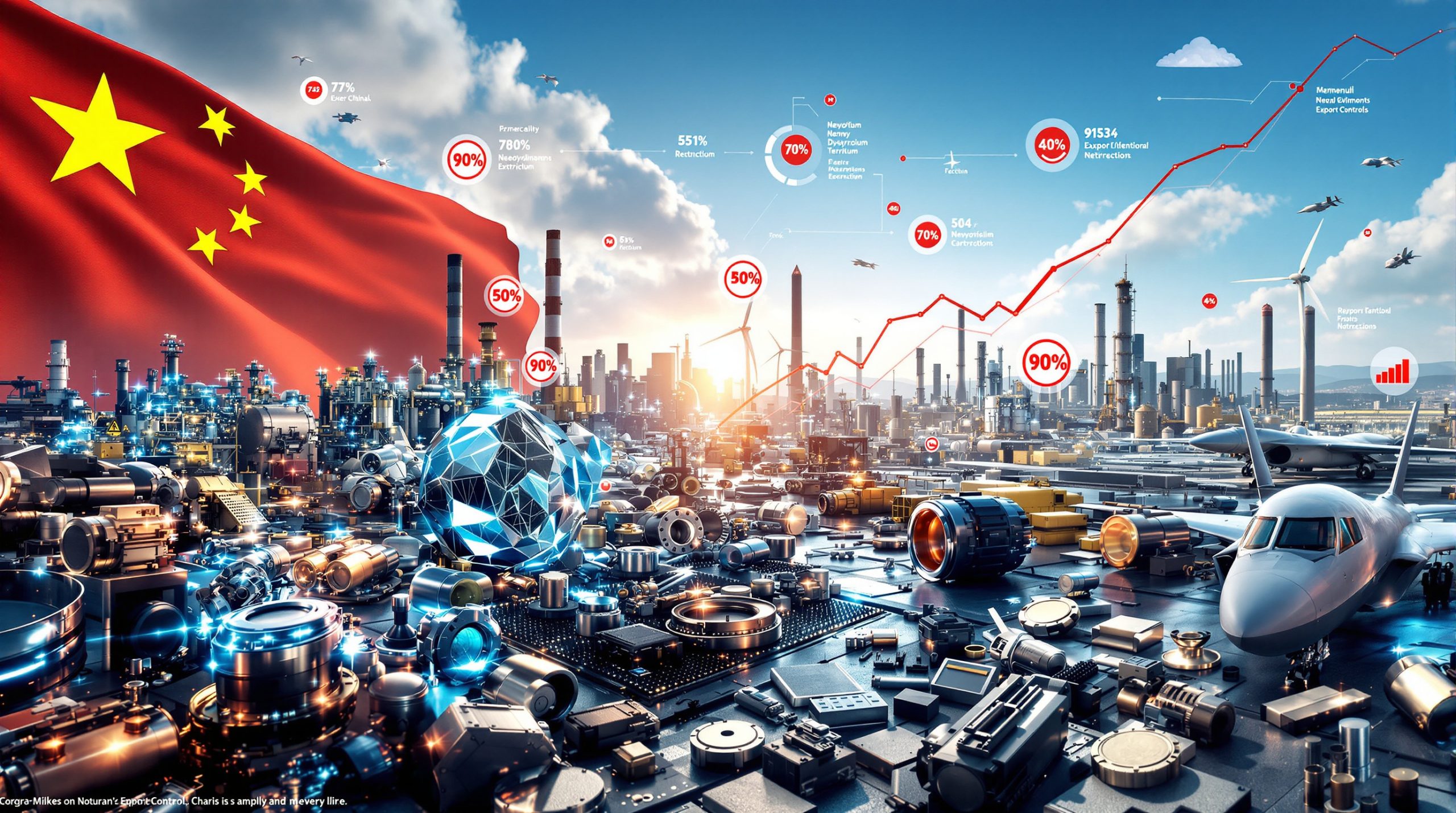Understanding the Global Impact of U.S. Steel and Aluminum Tariffs
The implementation of U.S. steel and aluminum tariffs has triggered significant global economic and diplomatic repercussions. Key trading partners, including China and the European Union, have responded with retaliatory measures, creating a complex web of trade tensions. China's aggressive tariff increases to 84% on U.S. goods and the EU's strategic countermeasures highlight the escalation of these disputes. Businesses like Delta Airlines report operational stalling due to uncertainty, while corporations such as Walmart adopt offensive strategies to mitigate impacts. Economic analysts warn of short-term pain but anticipate long-term gains through tax cuts and deregulation, while diplomatic officials caution about strained international relations.
What Are the U.S. Steel and Aluminum Tariffs?
The tariffs represent a significant shift in U.S. trade policy, imposing a 25% duty on steel imports and a 10% duty on aluminum imports from various countries. These measures were implemented under Section 232 of the Trade Expansion Act, which allows for trade restrictions when imports are deemed to threaten national security. The administration justified these tariffs by arguing that foreign steel and aluminum imports had undermined domestic production capacity critical for defense and infrastructure projects.
The scope of these tariffs is extensive, affecting over $50 billion worth of imported metals annually. While some countries received temporary exemptions, many major trading partners faced the full impact of these duties. The economic rationale behind these measures stems from concerns about global overcapacity, particularly from China, which has been accused of dumping subsidized metals into international markets at artificially low prices.
Within the broader policy framework, these tariffs represent a departure from decades of U.S. support for free trade agreements and multilateral trading systems. Instead, they signal a shift toward protectionist measures designed to revitalize domestic manufacturing sectors that have experienced significant decline over recent decades.
How Are Global Trading Partners Responding?
The international response to U.S. tariffs has been swift and strategic. Major trading partners have implemented countermeasures targeting politically sensitive American exports. The scale of retaliation has been substantial, with countries collectively imposing tariffs on over $75 billion of U.S. goods. These retaliatory measures have been carefully calibrated to maximize economic and political pressure while remaining proportionate under World Trade Organization (WTO) rules.
Trading partners have strategically selected American products for countermeasures, focusing on agricultural goods, consumer products, and industrial items from politically significant regions. For example, EU tariffs targeted bourbon from Kentucky and motorcycles from Wisconsin—states with significant political importance. This approach aims to create domestic pressure on U.S. policymakers to reconsider the steel and aluminum tariffs.
The economic impact assessment reveals immediate disruptions to cross-border trade flows. U.S. exports of targeted products have declined by up to 30% in some sectors, while consumer prices have risen for metal-intensive products. Meanwhile, diplomatic tensions have escalated, with traditional allies expressing frustration through formal WTO complaints and reduced cooperation on other international issues.
China's Aggressive Tariff Response
How Significant Is China's Retaliation?
China's retaliatory measures stand out as particularly severe, with tariffs on U.S. goods raised to an unprecedented 84%. This represents the most aggressive response among all trading partners and signals Beijing's determination to counter U.S. trade pressure. The scale of these tariffs exceeds typical trade countermeasures, reflecting the broader strategic competition between the world's two largest economies.
The Chinese government has strategically selected industries for tariff imposition, targeting sectors with political significance in the U.S. domestic landscape. These include agricultural products from rural states, manufacturing goods from industrial regions, and high-tech products from coastal innovation hubs. By spreading the economic pain across diverse U.S. constituencies, China aims to maximize political pressure on American policymakers.
Economic implications for U.S. exporters dependent on the Chinese market are substantial. Companies reliant on Chinese consumers have reported revenue declines between 15-40%, with agricultural exporters particularly hard hit. The loss of market share in China may prove difficult to recover even if tariffs are eventually removed, as Chinese buyers establish new supply relationships with competitors from Australia, Brazil, and other nations.
What U.S. Products Are Most Affected by Chinese Tariffs?
Agricultural exports face the most severe impacts from Chinese tariffs. Soybeans, which previously represented a $14 billion annual export to China, have experienced price drops of over 20% and volume reductions exceeding 50%. This has created significant hardship for farmers in Midwestern states, where agricultural operations often operate on thin margins. Pork producers have similarly seen exports to China fall by nearly 30%, while fruit and nut growers from California report losses exceeding $500 million annually.
Manufacturing goods targeted by Chinese tariffs include automobiles, aircraft parts, and industrial machinery. Companies like Boeing have seen orders from Chinese airlines decline by over $10 billion, while automotive exports have dropped by approximately 25%. The impact extends beyond direct exporters to include thousands of small and medium-sized businesses in the supply chain, many of which lack the resources to pivot quickly to alternative markets.
Consumer products facing Chinese tariffs include pharmaceuticals, cosmetics, and household goods. American brands that had developed loyal Chinese customer bases now face price disadvantages of 25-84% compared to competitors from other countries. This has forced difficult decisions regarding price absorption, market abandonment, or production relocation to circumvent tariffs. The strategic selection of these products demonstrates China's sophisticated understanding of how to maximize economic and political leverage through targeted trade measures.
European Union's Countermeasures
What Retaliatory Steps Has the EU Taken?
The European Union implemented a two-phase tariff framework in response to U.S. steel and aluminum duties. The first phase introduced immediate tariffs on €2.8 billion ($3.2 billion) of U.S. goods, while the second phase prepared additional tariffs on €3.6 billion ($4.1 billion) of products contingent on WTO rulings. This measured approach allowed the EU to signal resolve while maintaining flexibility for negotiations.
The EU's targeting of American products has been meticulously calculated for maximum impact. Iconic American brands face 25% tariffs, including Harley-Davidson motorcycles, Levi's jeans, and Jack Daniel's whiskey. Agricultural products from Republican-leaning states have been particularly affected, creating domestic political pressure on the U.S. administration. The EU Commission explicitly stated its intention to "rebalance" trade relations while minimizing disruption to European consumers.
Economic justification for the EU's response has centered on the concept of proportional retaliation permitted under WTO rules. EU Trade Commissioner statements emphasized that while the bloc preferred dialogue, it would "not stand idle" while European industries suffered from "unjustified" U.S. measures. This balanced diplomatic approach combined firm countermeasures with continued engagement in bilateral talks, positioning the EU as a defender of market dynamics explained while leaving room for eventual compromise.
How Are European Businesses Adapting?
European steel and aluminum processors have implemented significant supply chain adjustments to mitigate tariff impacts. Companies like ThyssenKrupp and ArcelorMittal have redirected procurement strategies, reducing U.S. metal imports by over 40% and increasing intra-EU sourcing by 25%. This restructuring has required substantial investment in supplier qualification and logistics reconfiguration, but has protected production continuity for critical automotive and construction applications.
Market diversification efforts have intensified, with EU manufacturers securing alternative suppliers from countries including Japan, South Korea, and Brazil. Trade data shows a 35% increase in steel imports from these nations, offsetting the decline in U.S. materials. European industry associations report that while this transition has increased costs by 8-12%, it has established more resilient supply networks less vulnerable to geopolitical disruptions.
Pricing strategies among European companies reflect sophisticated approaches to handling increased costs. Approximately 30% of affected businesses have absorbed tariff impacts through margin reduction, while 45% have implemented staged price increases to preserve market share. The remaining firms have accelerated innovation initiatives to justify premium pricing or develop substitute materials. EU government support programs have facilitated this adaptation through €500 million in transition assistance, trade promotion services, and regulatory flexibility for affected industries.
Business Impact and Uncertainty
How Are Companies Responding to Tariff Uncertainty?
Delta Airlines' experience exemplifies the broader corporate challenges posed by tariff uncertainty. The company's CEO reported that business investment decisions were "stalling" amid unpredictable trade policies, with a $2 billion fleet modernization program placed on hold. This hesitancy reflects a wider trend among multinational corporations, with surveys indicating that 68% of large businesses have delayed significant capital expenditures due to trade policy volatility.
Corporate planning faces unprecedented challenges in this environment. Traditional forecasting models struggle to account for rapidly shifting tariff scenarios, compelling 73% of Fortune 500 companies to develop multiple contingency plans rather than definitive strategies. This planning paralysis generates significant administrative costs—estimated at $1.2 billion annually across major U.S. corporations—while delaying productivity improvements and innovation initiatives.
Investment hesitation extends beyond immediate tariff targets to affect broader economic sentiment. Venture capital funding for manufacturing startups has declined by 18%, while mergers and acquisitions in trade-sensitive sectors have dropped by 22%. Risk management strategies have evolved accordingly, with companies implementing sophisticated tariff monitoring systems, geographic diversification of supply chains, and increased inventory buffers to mitigate potential disruptions caused by Trump's market impact.
What Industries Are Most Vulnerable to Trade Tensions?
The manufacturing sector faces acute impacts from tariff escalation. Industries with high metal content in their products report cost increases of 12-18%, with automotive and appliance manufacturers particularly affected. Small manufacturers with limited pricing power have seen profit margins compress by up to 25%, forcing difficult decisions regarding automation, outsourcing, or market exit. The sector's interconnectedness means these challenges cascade through supply chains, affecting businesses seemingly removed from direct tariff exposure.
Agricultural exporters confront market access challenges and price volatility. Soybean farmers have experienced price declines of over 20% coupled with export volume reductions exceeding 30% to China. The USDA's Market Facilitation Program has provided $12 billion in assistance, but industry representatives note this covers only about 40% of lost revenue. Meanwhile, agricultural equipment manufacturers face a "double squeeze" from metal input costs and reduced farmer purchasing power.
Consumer goods companies must navigate retail price implications and margin pressure. Appliance manufacturers have implemented price increases of 5-15%, while electronics producers report component cost increases of 8-12%. Retailers face difficult inventory management decisions, with 58% reducing product variety to maintain price points. Global supply chain disruption extends beyond tariffed items to affect logistics networks more broadly, with container shipping rates between affected regions increasing by 22% due to trade pattern distortions.
Economic Analysis and Expert Perspectives
What Do Economic Experts Say About Tariff Impacts?
Market analyst Bob Doll of Crossmark Global Investments has characterized the current tariff situation as "front-loading pain" in pursuit of longer-term trade relationship improvements. His analysis suggests that while GDP growth may face a 0.3-0.5 percentage point reduction in the near term, structural changes to trade relationships could yield benefits if negotiations produce more balanced arrangements. This perspective represents a minority view among economists, with most forecasting net negative outcomes.
Distinguishing between short-term and long-term effects remains challenging. Immediate impacts include price increases for metal-intensive products (5-15%), supply chain disruptions affecting delivery times (extended by 15-45 days), and employment reductions in export-dependent sectors (estimated at 120,000 jobs). Longer-term structural changes could include permanent shifts in global market insights, reduced U.S. agricultural market share in Asia, and accelerated automation to offset higher input costs.
GDP growth projections have been revised downward by major financial institutions, with consensus estimates reducing 2023 growth forecasts by 0.4 percentage points due to trade tensions. The Congressional Budget Office estimates that sustained tariffs at current levels would reduce real GDP by 0.5% over five years while increasing consumer prices by 0.3% annually. These macroeconomic effects are distributed unevenly, with manufacturing-intensive regions experiencing more significant impacts than service-oriented economies.
How Do Tariffs Interact with Other Economic Policies?
The relationship between tariffs and tax cuts creates complex economic cross-currents. While corporate tax reductions provided an average 7% boost to business profitability, tariff-related cost increases have offset 25-40% of these gains for manufacturing firms. Small businesses report particular challenges navigating these contradictory policies, with 62% indicating that tariff compliance costs have consumed resources intended for expansion under tax reform incentives.
Deregulation effects partially mitigate tariff challenges for some sectors. Energy companies cite reduced compliance costs averaging $4.2 million annually, helping offset increased equipment costs from steel tariffs. However, environmental organizations warn that this combination of policies creates perverse incentives, with companies redirecting regulatory compliance savings toward tariff management rather than innovation or efficiency improvements.
Monetary policy considerations have become increasingly complex in this environment. Federal Reserve officials acknowledge that tariff-induced price increases complicate inflation management, potentially requiring higher interest rates than would otherwise be necessary. This policy tension creates additional uncertainty for businesses already navigating volatile trade conditions. Fiscal policy coordination faces similar challenges, with tariff revenue ($7.1 billion in 2022) providing minimal offset to tax reduction costs while introducing economic distortions that complicate growth projections.
Diplomatic and Global Trade Implications
What Is the Diplomatic Fallout from Escalating Tariffs?
Former Secretary of State Antony Blinken has characterized the diplomatic consequences of tariff escalation as "straining relationships with allies at precisely the moment when coordination is most needed on global challenges." This assessment reflects concerns about diminished cooperation on issues ranging from climate change to security coordination. Diplomatic communications leaked from European capitals indicate a 30% reduction in information sharing on certain security matters following tariff implementation.
WTO compliance questions have intensified, with 16 countries filing formal challenges to U.S. tariff measures. Legal experts estimate a 65-75% probability that these measures will ultimately be found inconsistent with WTO obligations, potentially authorizing additional retaliatory measures valued at $8-10 billion annually. This legal uncertainty undermines the rules-based trading system that has governed international commerce for decades.
Negotiation dynamics have been fundamentally altered, with trading partners reporting reduced trust in U.S. commitment to previously negotiated agreements. Diplomatic sources indicate that negotiation timeframes have extended by 40-60%, with counterparts demanding additional verification mechanisms and contingency provisions. Alliance strain has been particularly evident in NATO relationships, with defense procurement cooperation declining by 25% between the U.S. and European allies as tariff tensions spill over into security domains.
How Might the Tariff Situation Evolve?
Potential escalation scenarios include an expansion of covered products, with economic models suggesting a 30% probability of tariffs extending to automobiles and consumer electronics within 18 months. Such escalation could affect an additional $200 billion in trade flows and generate second-order effects through disrupted supply chains and reduced business confidence. Geopolitical investment strategies have become increasingly important as trade tensions persist and potentially expand to new sectors.
De-escalation pathways exist but face significant obstacles. Negotiation frameworks under consideration include sector-specific agreements that could resolve metal tariffs while addressing underlying concerns about overcapacity and subsidization. However, these approaches require confidence-building measures that have proven elusive amid heightened tensions. Timeline projections from trade policy experts suggest that meaningful resolution is unlikely before mid-2024, with full normalization potentially requiring 3-5 years as supply chains reconfigure and political cycles complete.
Corporate Adaptation Strategies
How Are Major Retailers Responding?
Walmart exemplifies the adaptive capacity of large retailers, with its CEO emphasizing the company's ability to "play offense" despite tariff challenges. The retailer has leveraged its scale to renegotiate supplier terms, with approximately 35% of tariff costs absorbed by suppliers rather than passed to consumers. Additionally, Walmart has accelerated diversification of sourcing, reducing Chinese imports by 22% while increasing procurement from Vietnam, Cambodia, and Mexico. These adjustments have limited price increases to 3-5% on affected items, compared to industry averages of 8-12%.
Supply chain adjustments across the retail sector reveal sophisticated adaptation strategies. Target has implemented AI-powered tariff impact modeling that identifies alternative sourcing options within 72 hours of tariff announcements. Home Depot has established parallel supply chains for key products, maintaining redundant sourcing from tariffed and non-tariffed regions to ensure continuity. These approaches require significant investment—typically 2-4% of annual revenue—but position companies to maintain competitive pricing despite trade disruptions.
Pricing strategies vary significantly across retailers. Discount chains have maintained prices on essential items while accepting 15-20% margin compression, whereas specialty retailers have implemented full pass-through of tariff costs with price increases of 8-15%. Consumer communication strategies have evolved accordingly, with 42% of retailers explicitly attributing price increases to tariffs while others obscure these connections through package size reductions or subtle product reformulations.
What Strategies Help Businesses Navigate Tariff Uncertainty?
Diversification approaches extend beyond geographic considerations to include product design modifications. Manufacturing companies report redesigning 15-30% of products to reduce dependence on tariffed components, while food processors have reformulated recipes to substitute domestic ingredients for imported ones where feasible. These adaptations require significant R&D investment—typically increasing by 8-12% during tariff periods—but
Wondering How to Stay Ahead of Major Mineral Discoveries?
Discovery Alert's proprietary Discovery IQ model instantly notifies investors about significant ASX mineral discoveries, transforming complex data into actionable insights that could lead to substantial returns. Explore how major mineral discoveries have historically generated exceptional market outcomes by visiting Discovery Alert's dedicated discoveries page.




